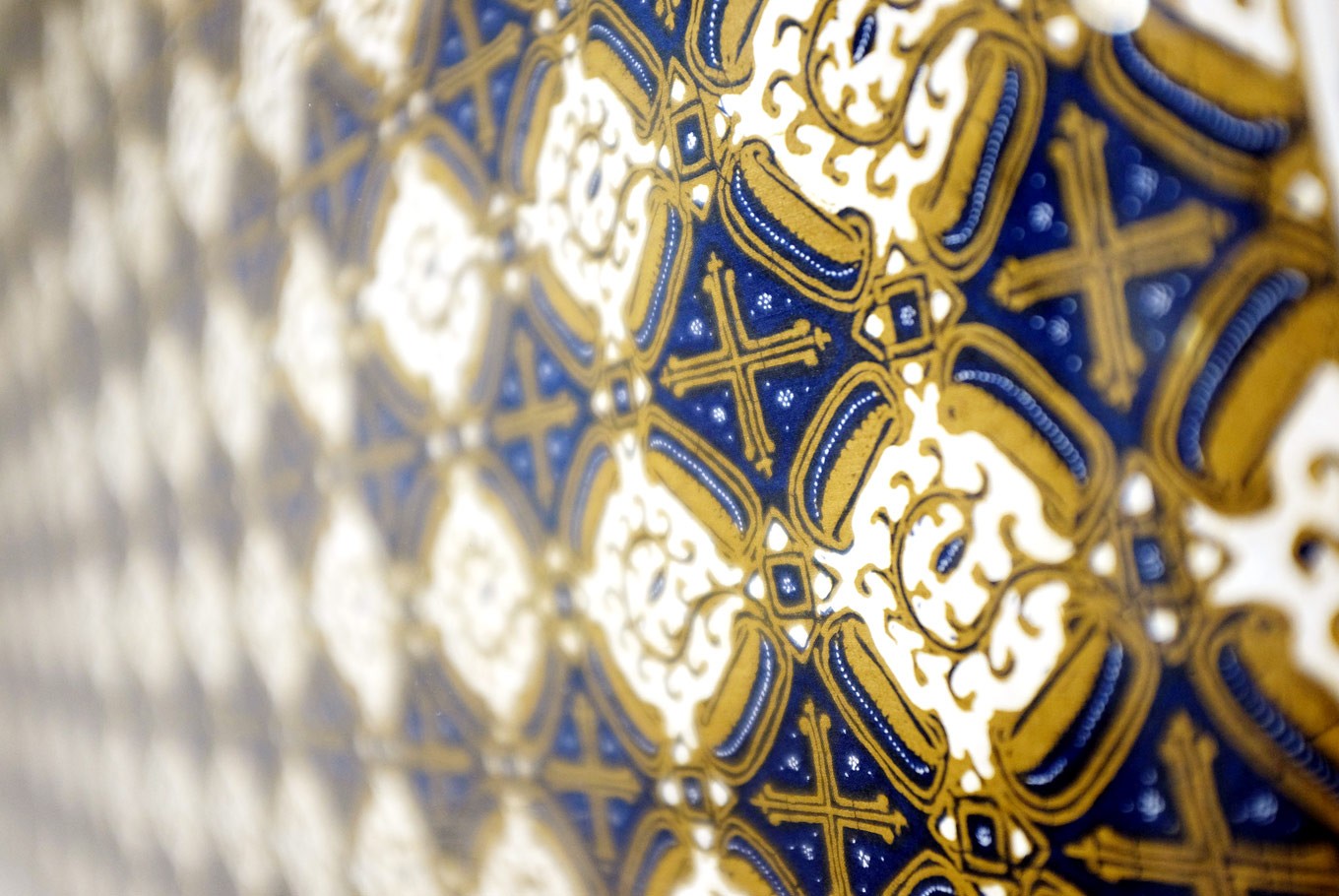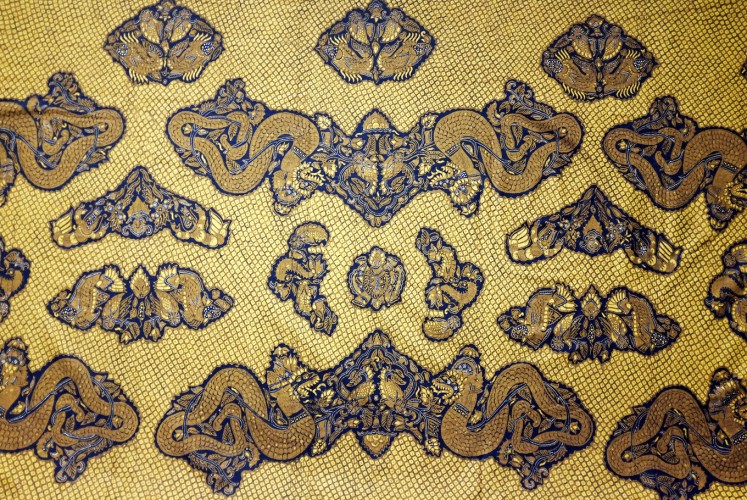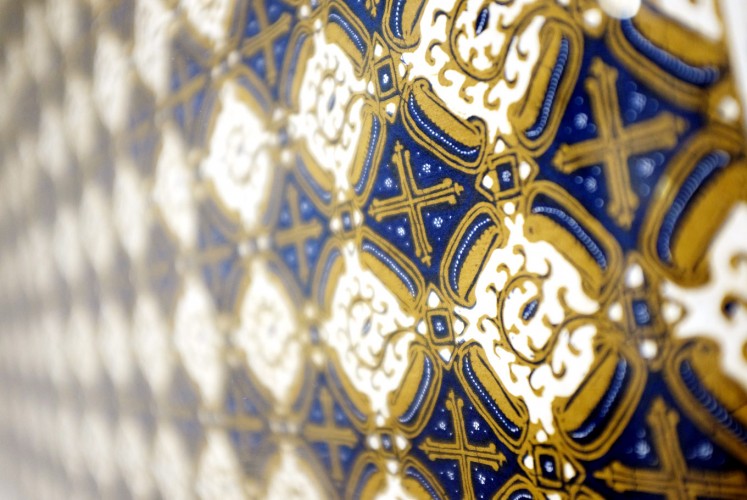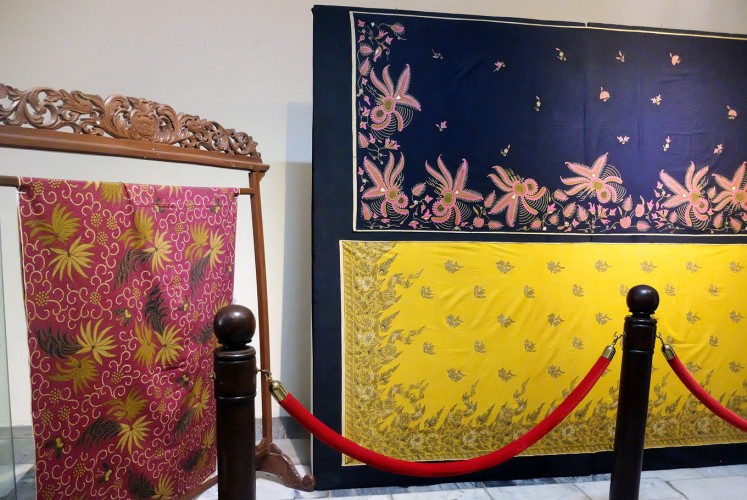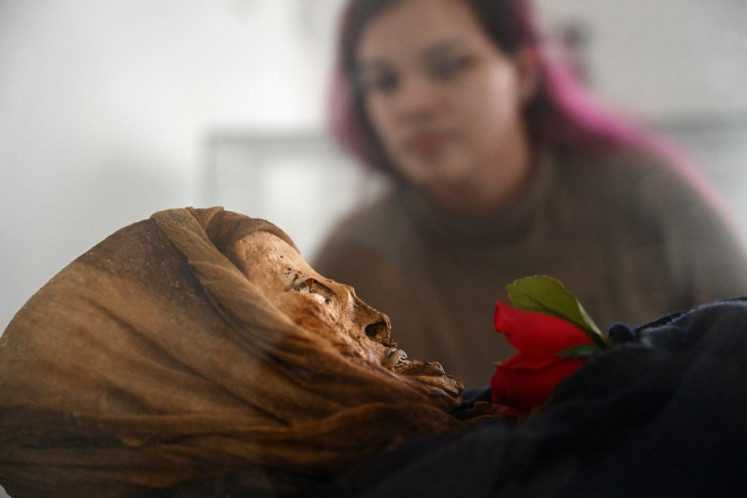Popular Reads
Top Results
Can't find what you're looking for?
View all search resultsPopular Reads
Top Results
Can't find what you're looking for?
View all search resultsPreserving Go Tik Swan batik legacy
An extensive collection of work by renowned batik maestro Go Tik Swan is on public display in Jakarta as the country marks National Batik Day on Oct. 2
Change text size
Gift Premium Articles
to Anyone
T
he name Go Tik Swan is immediately associated with batik. The renowned batik master, also known as Panembahan Hardjonagoro, is famous for creating the Batik Indonesia collection that dates back to the 1950s.
Part of a family of batik makers and traders of Chinese descent from Surakarta, Central Java, Go Tik Swan delved deeply into Javanese culture and arts and his greatest passion was batik making.
“He said that anyone interested in batik philosophy should also learn other cultural aspects of Java, like dancing, poetry, singing and other practices,” said Sri Sintasari Iskandar, curator of a batik exhibition entitled “Nunggak Semi”(Blossoming) at the Textile Museum in Tanah Abang, Central Jakarta, which is displaying Go Tik Swan’s batik collection until Nov. 12.
A batik from batik master Go Tik Swan is on display at the Textile Museum in Tanah Abang, Central Jakarta until Nov. 12. (JP/Jerry Adiguna)
Sri, who had the opportunity to learn batik art from the maestro himself, said that Go Tik Swan used to perform austere measures before creating batik motifs, believing that a piece of batik was imbued with various philosophical values.
His high dedication to the art earned Go Tik Swan — who was also a kris (ceremonial dagger) master, a fine Javanese dancer, a gamelan master and a Javanese cultural expert, as he studied old Javanese literature at the University of Indonesia — the noble title of Panembahan Hardjonegoro from the Surakarta sultanate.
Go Tik Swan’s fame was noticed by first president Sukarno, who in the mid-1950s asked him to craft the renowned Batik Indonesia as a symbol of batik beauty and Indonesian culture, with no regional segmentation despite the application of classic norms.
Following the request, the batik master started a spiritual journey, which also took him to Walter Spies, a German artist living in Bali, before finally enabling him to comply with the first president’s request.
Sri said Go Tik Swan later created the Batik Indonesia collection, which combined elements of Surakarta and Yogyakarta with colorful coastal batik patterns.
Public viewing: A collection from batik master Go Tik Swan is on display at the Textile Museum in Tanah Abang, Central Jakarta until Nov. 12. (JP/Jerry Adiguna)Of the 80 batik pieces on display at the museum, visitors can observe this crossbred style in Terang Bulan (full moon) and Sawunggaling batiks with bright colors and Bali motifs. There’s also Pisan Bali — a classic motif named after the gamelan melody cara balen to welcome royal guests.
“It’s a special piece as it was crafted by Go Tik Swan,” said renowned designer Didi Budiardjo, whose collection is also on display at the exhibition.
The event also presents two batik sheets especially made for Sri Susuhunan Pakubuwono XII of the Surakarta palace as a gift on the occasion of the 32ndanniversary of his coronation. Named Tumurun Sri Narendra, the batiks bear crown and globe symbols, which are exclusively for kings. At the request of batik lovers, their derivatives have been created, called Kusuma Sri Narendra. Totaling only 64 and no longer reproduced, they are treasured by collectors including Didi and Sri.
The period from 1950 to 1970 was the heyday of Go Tik Swan. He was so immersed in batik making that he crafted a motif called Kembang Bangah(rotten flowers) during 1970 to 1990, as a form of his protest against the younger generation’s indifference toward national culture.
The name Go Tik Swan is immediately associated with batik. The renowned batik master, also known as Panembahan Hardjonagoro, is famous for creating the Batik Indonesia collection that dates back to the 1950s. (JP/Jerry Adiguna)Sri said that apart from new motifs, Go Tik Swan also reinterpreted classic patterns.
“He made parang [sloping line] motifs in such a way as to produce an optical illusion. He also drew motifs on other designs,” said the curator, who has a batik gallery in South Jakarta.
Both Didi and Sri praised Go Tik Swan as Indonesia’s batik maestro. Even the late batik fashion designer Iwan Tirta and batik stylist Obin were once his protégés.
Despite his reputation, Go Tik Swan was never enraged when his motifs were imitated by other batik makers, provided that the products were not branded as Go Tik Swan’s.
None of his motifs were patented either so as to help people who were inspired by his patterns.
“He said the widespread imitations would make him more famous,” recalled Sri.
Play of color: The Terang Bulan batik collection combines Surakarta and coastal batik elements. (JP/Juliana Harsianti)
